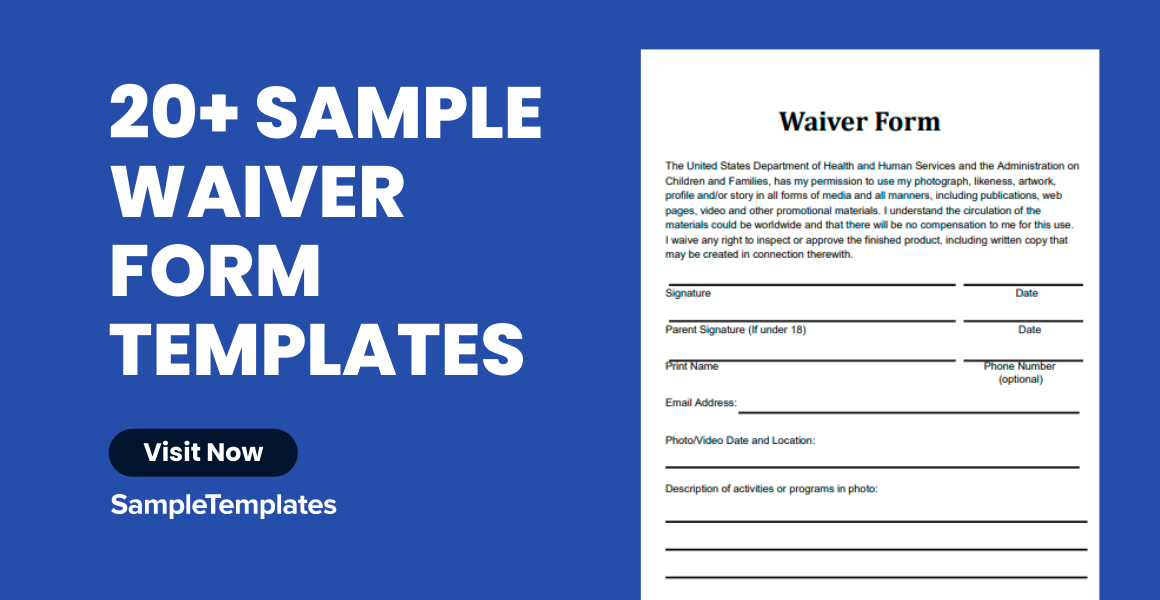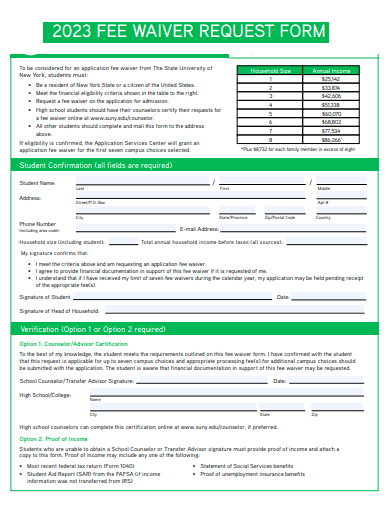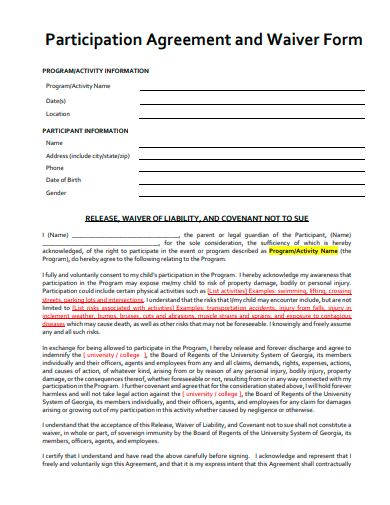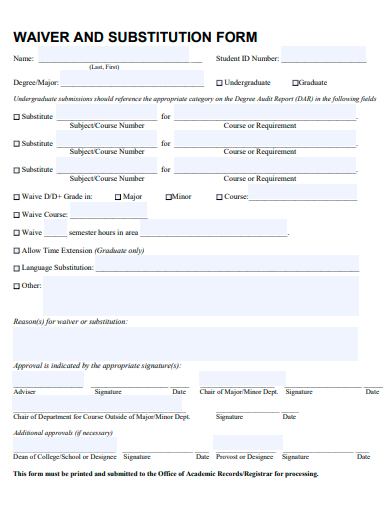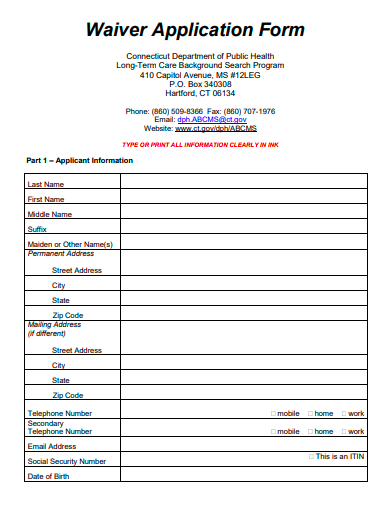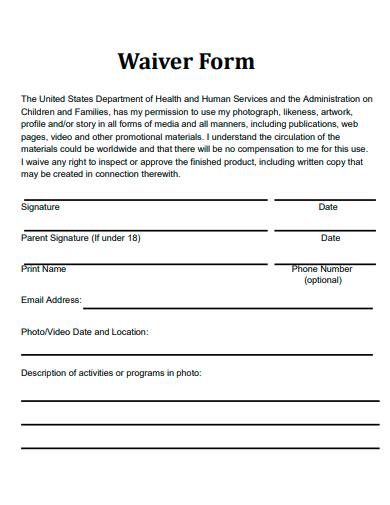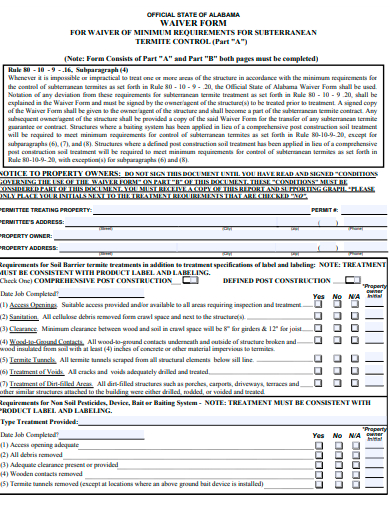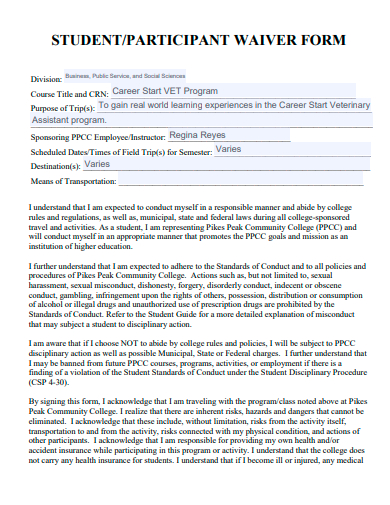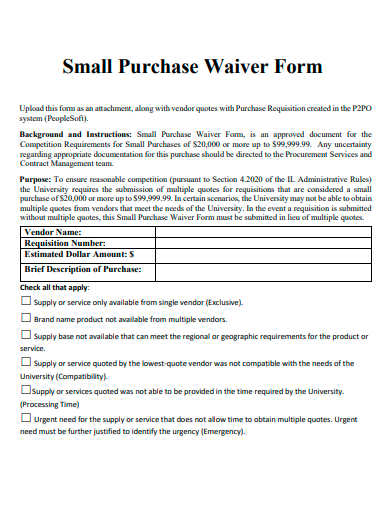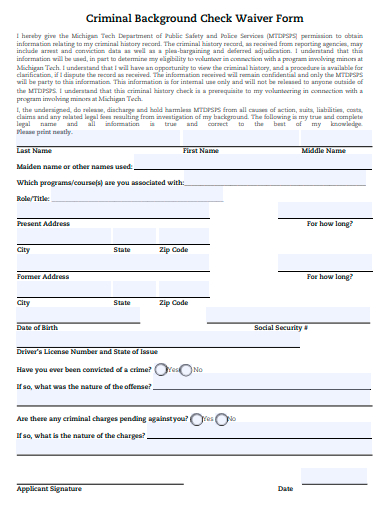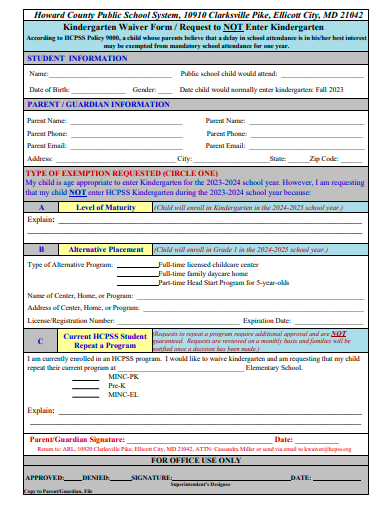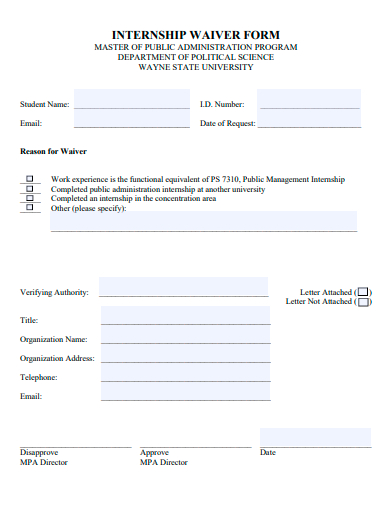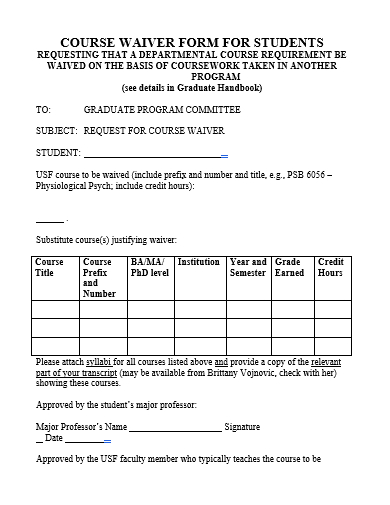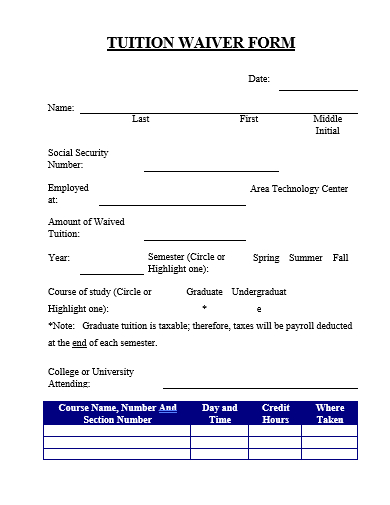In the intricate dance of agreements and liabilities, having a clear-cut waiver can make all the difference. Introducing our Sample Waiver Form Template: an essential tool tailored for those who seek a straightforward approach to legal protection. Whether you’re an organizer, service provider, or a business owner, this template stands as a testament to the importance of a well-created agreement. Below, you’ll find a sample worded version to guide you seamlessly through the waiver process.
20+ Waiver Form Samples
1. Free Payment Waiver Form Template

2. Free Training Waiver Form Template
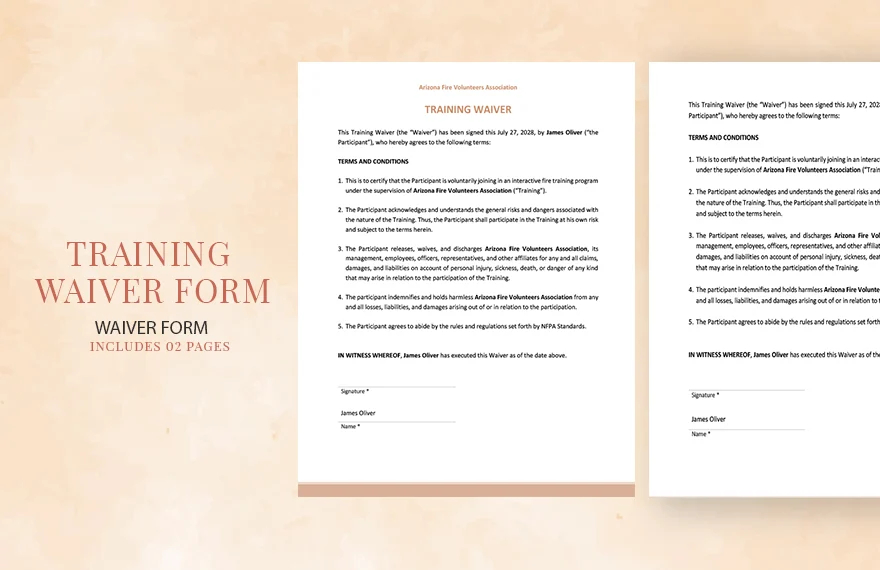
3. Free Generic Medical Waiver Form Template
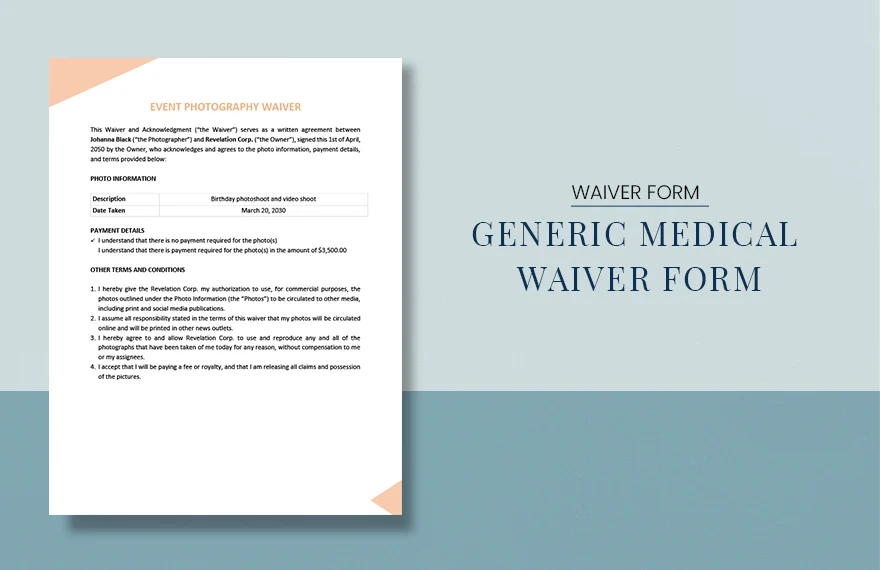
4. Free Employee Medical Waiver Form Template
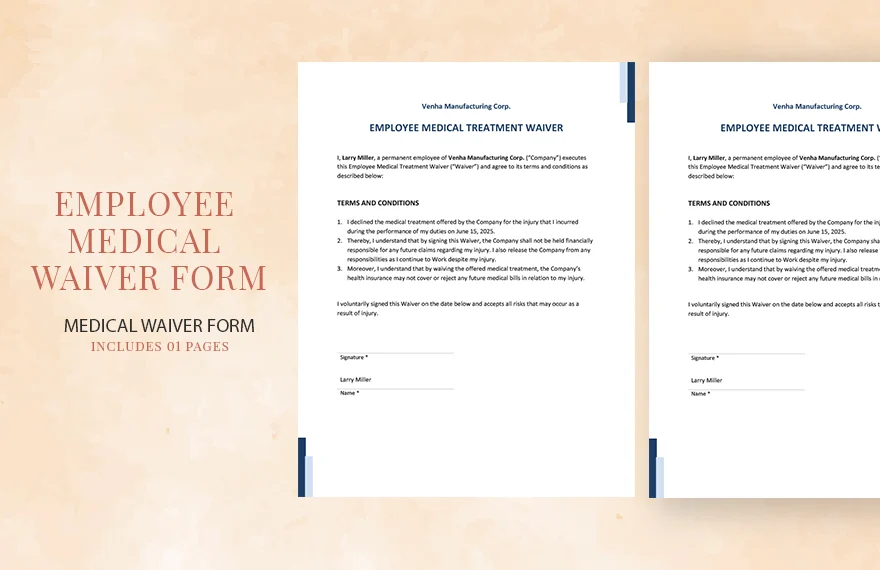
5. Fee Waiver Request Form Template
6. Sample Employee Waiver Form Template
How do I write a simple waiver form?
Writing a simple waiver form requires a clear understanding of the purpose it serves and ensuring that it’s both comprehensive and easily understood. A waiver is a legal document in which one party voluntarily gives up a right, claim, or privilege, protecting another party from liability for potential claims or damages. Here’s a step-by-step guide to creating a basic waiver form:
Title & Introduction
Begin with a clear title that reflects the purpose of the document, such as “Waiver and Release of Liability”. You can include a brief paragraph explaining the purpose and emphasizing the voluntary nature of signing the form.
Identification of Parties
Clearly identify the two parties involved: the party offering the service (could be an organization, business, or individual) and the party accepting the risk (usually called the participant). You can set this up as:
Party Releasing from Liability (Provider): [Business/Individual’s Name]
Party Assuming Risk (Participant): [Individual’s Name]
Description of the Activity or Service
Detail the specific activity, event, or service for which the waiver is being signed. This offers clarity about what risks the
participant is acknowledging.
Example: The participant wishes to partake in rock climbing activities provided by the provider.
Acknowledgment of Risk
This section should detail the inherent risks associated with the activity. It’s important to be explicit about the potential dangers, ensuring that the participant is fully aware of what they might encounter.
Example: The participant acknowledges that rock climbing carries inherent risks including but not limited to physical injury, falls, or equipment malfunction.
Release from Liability
The heart of the waiver, this section states that the participant won’t hold the provider liable for any damages, injuries, or losses resulting from the activity.
Example: The participant releases the provider, its affiliates, agents, and employees from any claims or damages resulting from any injury or loss while engaging in the activity.”
Other Provisions
Depending on the activity or your location, you may need additional clauses. Some examples include:
Medical Treatment: The participant allows for the provider to seek medical treatment for them in case of injury.
Photo & Video Release: The participant gives permission for their image or likeness to be used for promotional purposes.
Acknowledgment of Understanding: A statement where the participant acknowledges having read and understood the terms.
Signature & Date
End the waiver form with spaces for the participant’s signature and date, confirming their agreement to the terms. If the participant is a minor, you’ll need a section for parental consent.
Review and Consult
While this guide provides a framework, it’s crucial to have your waiver reviewed by legal counsel. Laws and requirements vary based on location and activity, so consulting a professional ensures your waiver form is enforceable and compliant with local regulations.
Remember, the goal of a waiver is to communicate potential risks transparently and protect providers from legal claims. Keeping the language simple and direct is key, but never at the expense of clarity or comprehensiveness.
7. Participation Agreement and Waiver Form Template
8. Waiver and Substitution Form Template
9. Waiver Application Form Template
10. Sample Waiver Form Template
11. Waiver Form Template
12. Software Waiver Form Template
13. Sample Field School Waiver Form Template
What are the elements of a waiver?
A waiver is a legal tool used to protect individuals, businesses, or organizations from potential liabilities when someone is participating in an activity that might pose risks. For a waiver to be effective and enforceable, it should possess certain elements that clarify its purpose, ensure mutual understanding, and establish the boundaries of the agreement. Here are the essential elements of a waiver:
Title and Purpose
Every waiver should begin with a title that clearly indicates its purpose. This not only offers immediate clarity to the person signing the waiver but also sets the tone for the document. For instance, a Release of Liability Waiver title immediately indicates the nature of the agreement.
Clear Identification of Parties
It’s essential to define who the waiver is between. This typically involves the entity offering a service or hosting an activity (often referred to as the Provider or Releasee) and the individual or group participating in the activity (often termed the “Participant” or “Releasor”).
Description of the Activity or Event
The waiver should specifically describe the activity or event for which the waiver applies. This description offers context and ensures the participant understands which activities or events they’re acknowledging risks for.
Acknowledgment of Risks
An essential component of any waiver is the acknowledgment of inherent risks associated with the activity or event. By detailing these risks, the participant can make an informed decision about their participation and understands the potential dangers or outcomes.
Release and Waiver of Liability
This section explicitly states that the participant agrees not to hold the provider liable for any harm, injury, or damage that may arise from participating in the activity. It’s the core of the document, where the participant relinquishes their right to sue or make claims against the provider.
Other Provisions or Clauses
Depending on the nature of the activity and the local laws, various other provisions might be included, such as:
Medical Treatment Clause: This provision allows the provider to seek emergency medical treatment for the participant if needed during the activity.
Photo and Video Release: A clause where the participant grants permission to the provider to use their image or likeness for promotional or other purposes.
Indemnification: This provision requires the participant to compensate the provider for any losses or damages they may incur due to the participant’s actions.
Acknowledgment of Understanding
This is a sample statement where the participant confirms that they’ve read, understood, and agreed to the terms outlined in the waiver.
Signature and Date
For the waiver to be binding, it must be signed and dated by the participant. If the participant is a minor, there should be a space for a parent or guardian’s signature, providing consent on their behalf.
Legal Review and Compliance
While not a written element within the waiver itself, it’s paramount to have the document reviewed by legal professionals to ensure it complies with local laws and is enforceable. Different jurisdictions have different requirements and nuances, so professional guidance is indispensable.
In essence, a waiver is a mutual agreement wherein one party understands and accepts the risks of an activity, and the other party seeks protection from potential liabilities arising from those risks. By ensuring that all these elements are present and tailored to the specific context, the waiver stands a better chance of being deemed valid in the eyes of the law.
14. Participant Waiver Form Template
15. Sample Small Purchase Waiver Form Template
16. Criminal Check Waiver Form Template
17. Sample Waiver Form for Registration Template
18. Kindergarten Waiver Form Template
19. Sample Internship Waiver Form Template
20. Course Waiver Form For Students Template
21. Tuition Waiver Form Template
What are the different types of waiver forms?
Waiver forms are legal documents that individuals sign to acknowledge the risks associated with certain activities and agree not to hold another party responsible for potential injuries or damages. Depending on the nature of the activities and the context in which they’re used, there are various types of waiver forms. Here’s an overview of some of the common types:
General Liability Waiver:
This is a broad form that releases a party from any potential liabilities. It’s often used in various contexts where basic activities are involved, and there’s minimal risk associated. For instance, a general event or a community gathering might require attendees to sign this waiver to prevent any claims for minor accidents that could occur.
Activity and Sports Waiver:
Specifically designed for physical activities and sports, this waiver is used by gyms, sports leagues, and adventure activity providers. It acknowledges the inherent risks associated with physical exertion and potential for injury.
Travel and Excursion Waiver:
Travel agencies, tour operators, and excursion providers often use this form. Participants acknowledge the potential risks of traveling, such as missed connections, lost luggage, or even natural disasters, and release the provider from liabilities arising from such incidents.
Medical and Health Waiver:
Used primarily in the healthcare sector, this waiver is signed by patients or participants who might undergo a medical procedure, treatment, or participate in health-related programs. It essentially acknowledges the potential risks and unforeseen outcomes of medical interventions.
Property Damage and Equipment Waiver:
If an individual borrows, rents, or uses equipment or property belonging to another party, they might be required to sign this waiver. It protects the owner from claims if the equipment is damaged or causes harm to the user.
Media Release Waiver:
Often used during events or activities where photography, videography, or audio recording might occur, this waiver gives the organizer the right to use the media in which the participant appears. It also waives any claims the participant might have concerning the use, such as rights of publicity or invasion of privacy.
Vehicle Use Waiver:
Companies or organizations that allow individuals to use their vehicles, whether for work or leisure purposes, might require this waiver. It protects the owner from liabilities should accidents occur while the vehicle is in use by the individual.
Minor Waiver:
When activities involve minors, a different waiver is required, which must be signed by the parents or guardians. This grants permission for the minor to participate and also acknowledges the associated risks.
Volunteer Waiver:
Organizations that engage volunteers for community service, events, or other activities often use this waiver. Volunteers acknowledge the risks associated with their service and agree not to hold the organization responsible for any potential injuries or issues.
Educational Trip and Activity Waiver:
Schools and educational institutions utilize this form when taking students on field trips or extracurricular activities. Parents or guardians sign to acknowledge the potential risks of the trip or activity.
In conclusion, the primary purpose of waiver forms is to safeguard the interests of one party by ensuring the other party is aware of and accepts the associated risks. While these are some of the more common types, it’s essential always to tailor waiver forms to the specific activity and consult legal professionals to ensure they’re effective and enforceable.
Related Posts
Sample Sworn Affidavit Forms
Vehicle Inspection Forms Samples & Templates
Sample Employee Advance Forms
Sample Child Travel Consent Forms
Sample Testimonial Request Forms
Sample Employee Details Forms
Sample Divorce Forms
Sample Attestation Forms
Employee Performance Appraisal Form Templates
FREE 9+ Sample Presentation Evaluation Forms in MS Word
FREE 10+ School Admission Form Samples & Templates in MS Word | PDF
FREE 30+ Patient Consent Form Samples in PDF | MS Word
FREE 10+ Sample Sign Off Form Templates in PDF | MS Word
FREE 11+ Sample Medical Consultation Forms in PDF | MS Word
FREE 8+ Sample Donation Forms in PDF | MS Word
